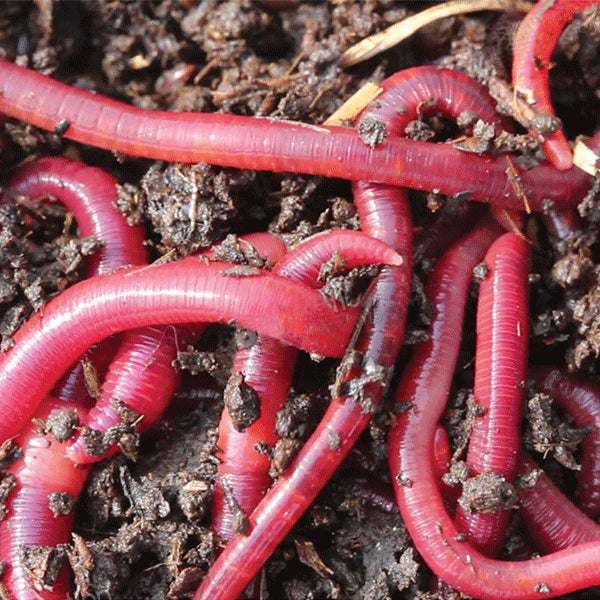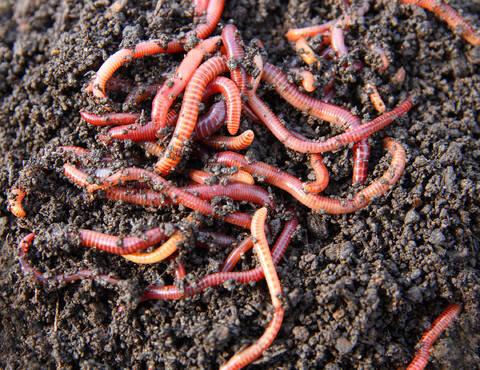Red worms: How to grow them efficiently
Wiki Article
Why Red Wigglers Are the Best Option for Your Composting Requirements
Red wigglers have actually emerged as a remarkable option for composting due to their impressive capability to successfully decay natural matter while producing top quality worm castings. The journey to effective vermicomposting entails more than just getting these worms, and recognizing the perfect problems and misconceptions surrounding them is crucial for optimizing their potential.Advantages of Red Wigglers

Red wigglers thrive in a range of conditions, making them versatile to different composting configurations, from small bins to bigger systems. They stand out in vermicomposting, where their task creates a top quality final product called worm spreadings, abundant in beneficial bacteria and nutrients essential for plant growth. This natural plant food advertises dirt health, enhances wetness retention, and boosts plant resilience against insects and illness.
In addition, using red wigglers can significantly decrease methane discharges connected with land fill waste, adding to ecological sustainability. Their convenience of treatment and minimal upkeep requirements make them suitable for both beginner and skilled composters. Eventually, integrating red wigglers right into your composting approach not just fosters effective waste administration yet also raises the top quality of your compost.
Suitable Composting Problems
Producing optimum composting conditions is essential for optimizing the performance of red wigglers in damaging down raw material. These worms flourish in a controlled setting that mimics their all-natural habitat, which largely consists of moist, dark, and well-aerated areas. To attain this, maintaining a temperature variety of 55 ° F to 77 ° F is essential, as extreme temperature levels can prevent their activity and even lead to mortality.(red wiggler fishing worms)Dampness levels have to additionally be meticulously kept an eye on; red wigglers need a damp environment, ideally around 70% dampness material. Excessive moisture can lead to anaerobic problems, while inadequate moisture can create dehydration. Furthermore, a balanced carbon-to-nitrogen proportion, ideally around 25:1 to 30:1, supports optimum digestion and nutrient cycling.
Moreover, the composting tool should be kept loose and aerated, enabling correct air movement. This not only benefits the worms however additionally help in the malfunction of organic products. By guaranteeing these ideal problems, composters can produce a growing environment that enhances the performance of red wigglers, ultimately bring about rich, nutrient-dense garden compost.
Exactly How to Beginning Vermicomposting
Starting vermicomposting is an uncomplicated process that can generate significant benefits for both your yard and the environment. To start, pick an appropriate container, such as a plastic container or a wooden box, ensuring it has air flow holes for air flow. A dimension of roughly 15 to 20 gallons is suitable for small procedures.Following, prepare the bed linen material, which should be a combination of shredded newspaper, cardboard, and coconut coir. This bed linen gives a comfy habitat for the worms while keeping wetness. Objective for a bedding depth of about 4 to 6 inches.
When the bed linen is ready, present red wigglers right into the container. A populace of about 1,000 worms suffices for processing cooking area scraps properly. After including the worms, incorporate a balanced mix of eco-friendly materials, such as fruit and veggie scraps, in addition to brownish materials, like dried fallen leaves.

Nutrient-Rich Spreadings
(red wigglers eisenia fetida)The red wigglers in your vermicomposting system play a crucial role in producing nutrient-rich spreadings, a very sought-after natural plant food. These castings, frequently described as worm humus, are the result of the worms digesting natural issue and secreting it in a kind that is incredibly valuable for plants.Rich in essential nutrients such as nitrogen, phosphorus, and potassium, worm castings give a balanced resource of fertility that improves soil structure and promotes healthy and balanced plant growth. Additionally, they include useful microorganisms that further improve dirt health and wellness, assisting in nutrient absorption and illness resistance.
The slow-release nature of worm castings makes sure that nutrients are readily available to plants over an extended duration, lowering the risk of nutrient leaching and hence adding to sustainable gardening practices. Unlike artificial fertilizers, which can result in soil destruction over time, worm castings improve the soil's physical, chemical, and organic buildings.
Because of this, incorporating red wigglers into your composting initiatives not only reduces waste yet additionally produces a costs visit their website organic amendment that significantly profits yards, landscapes, and potted plants alike. - red wigglers
Common False Impressions About Worms
While several people identify the advantages of making use of worms in composting, a number of false impressions linger regarding their biology and actions. One common myth is that all worms are similarly reliable for composting, when in reality, only specific varieties, like red wigglers, flourish in natural waste environments. These worms are particularly adapted to composting, making them optimal for this objective.One more false impression is that worms are delicate and call for extremely certain problems to endure. Actually, red wigglers are quite resilient, able to tolerate a series of temperature levels and wetness levels, supplied they are kept within an appropriate array.
Furthermore, some believe that worms consume all kinds of food waste indiscriminately. However, red wigglers favor certain organic materials, such as fruit and vegetable scraps, and can have a hard time with meat, dairy, and oily foods, which can create smells and bring in pests.
Verdict
To conclude, red wigglers represent an optimal choice for composting as a result of their fast disintegration abilities and adaptability to numerous settings. The nutrient-rich castings generated substantially improve soil wellness, advertising lasting horticulture techniques. Understanding the ideal problems for vermicomposting and resolving common misunderstandings concerning these worms better strengthens their role in effective waste monitoring. red wigglers. By leveraging the benefits of red wigglers, individuals and communities can add to a more lasting and eco-friendly technique to natural garbage disposal.Report this wiki page